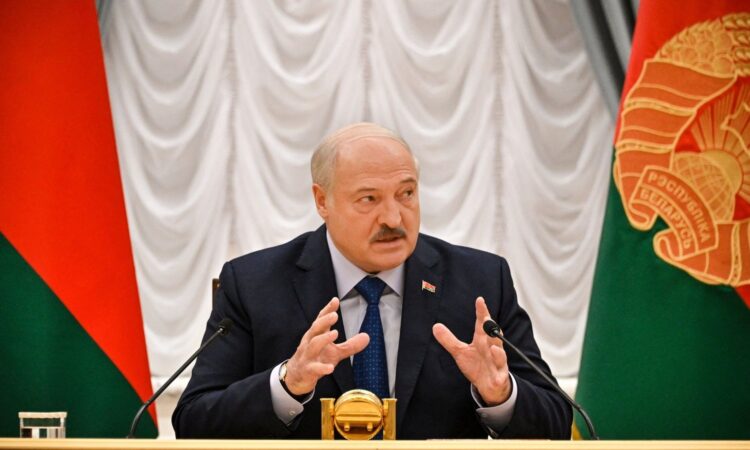
Residents of the Polish village of Bialowieza woke up on the morning of 1 August to the sound of helicopter blades above their houses.
It was not unusual. Their village is 3km from the border with Belarus and the Polish army often patrols the area.
But residents soon noticed that the two military helicopters, hovering a few dozen metres above their heads, displayed Belarusian markings.
One inhabitant told daily newspaper Wyborcza that he thought the helicopters would land on his roof.
Speaking to RTÉ News about the incident, Pavel Latushka, the deputy leader of the Belarusian opposition, who is in exile in Poland, said that it was part of the Belarusian regime’s “information-military game”.
He is ‘in exile’ because, like many of Belarus’ pro-democracy leaders, Mr Latuska left Belarus in 2020 following the Minsk regime’s crackdown on pro-democracy protests, and went on to help form the United Transitional Cabinet of Belarus.
Now based in Warsaw, he said that Moscow and Minsk were “playing a game to destabilise” Poland, Lithuania and Latvia, causing them to increase their defence resources at the borders with Belarus, and reduce their ability to help Ukraine.

Poland’s ministry of defence said that the helicopters had flown across the border at a low altitude, making it difficult to be detected by radar.
Minsk denied that its helicopters crossed into Polish airspace.
The increasingly militarised Polish-Belarusian border has been the scene of more activity this week.
On Tuesday, the Belarusian army conducted drills near the border with Poland and Lithuania.
Poland responded by announcing that it will increase its troop deployment along its 186km border with Belarus from 2,000 to 10,000, and deployed two combat helicopter brigades to the border region.
Lithuania, moving in lockstep with Warsaw, closed two of its six border crossings with its eastern neighbour.
And Latvia announced this week that it would bolster its border security in response to an increase in the number of illegal crossings by migrants from Belarus.
Belarus, ruled for almost three decades by autocrat Alexander Lukashenko, is a staunch ally of Russia, and a supporter of Russia’s war in Ukraine.
In February 2022, Russia launched part of its invasion of Ukraine from southern Belarus.
The escalating tension along NATO’s eastern border comes a little more than one month after Mr Lukashenko claimed to have brokered a deal between the Kremlin and Wagner mercenary chief Yevgeny Prigozhin following the group’s abortive 24-hour mutiny.
That secretive deal involved an offer by Mr Lukashenko to host Wagner mercenaries in Belarus.
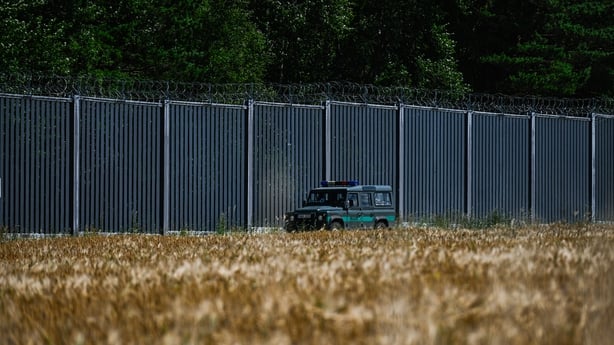
The arrival of 3,800 to 4,000 Wagner fighters in Belarus – a figure cited by the Belarusian Hajun Project, an activist group that monitors military activity in the country – has coincided with an increase in tension along its borders with eastern NATO members.
Recent efforts by Belarus to stir up tension on the border with Poland is not “Lukashenko’s exclusive strategy”, Kamil Klysinski, a Polish political analyst who focuses on Belarus, told RTÉ News.
“He is too weak, and Belarus is too small to have its own strategy towards the European Union and NATO. This is a common joint strategy, a Russian-Belarusian operation,” said Mr Klysinski, a senior fellow at the Centre for Eastern Studies in Warsaw.
In late July, during a meeting with Russian President Vladimir Putin in St Petersburg, Mr Lukashenko said that Wagner fighters wanted to move on to Warsaw and the south-eastern Polish city of Rzeszow.
“It’s a game of fake news and provocations in the field of information,” said Mr Klysinski.
Poland is due to hold a closely contested parliamentary election in mid-October, and many analysts view Minsk’s military posturing on the border as an effort to sap the Polish government’s energy in the midst of a busy campaign.
Mr Lukashenko’s actions are, in part, designed to impress a largely sceptical audience at home.
The autocrat has further tightened his grip on power since August 2020, when he used security forces to brutally suppress pro-democracy demonstrations following a rigged presidential election, which he claimed to have won with 80% of the vote.
“For Lukashenko, the enemy is the Belarusian people, because they did not vote for him in 2020,” said Mr Latuska, deputy head of the United Transitional Cabinet of Belarus.
“But he also has to show that he has enemies from outside. And, from outside, he has precisely the most important enemy, which is Poland. The West, as a whole, and NATO, is the enemy.”
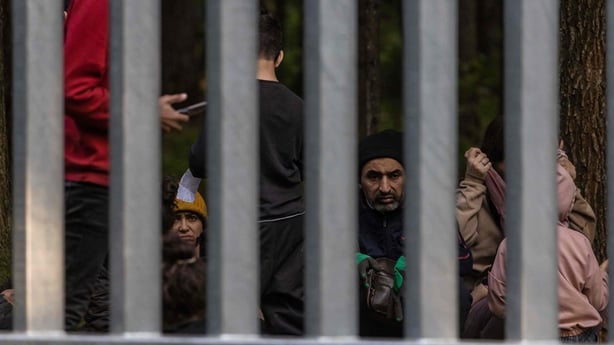
Taking on NATO, at least rhetorically, enables Mr Lukashenko to create a narrative of an ongoing wider war, not only in Ukraine, but also on Belarus’ borders with the West.
This is not the first time that Belarus has ramped up tension with its EU and NATO neighbours.
In late 2021, Minsk engineered a standoff on the border with Poland, directing thousands of migrants, mostly from the Middle East, Pakistan and Afghanistan, to cross secluded parts of the border.
In a standoff that lasted months, migrants remained sandwiched in a no-man’s land, between the Polish army on one side, and Belarusian security forces on the other.
Warsaw labelled it a “hybrid war”, accusing Belarus of trying to generate a migrant crisis in an effort to destabilise the EU.
The result was a 5.5-metre steel fence, built by the Polish government to keep migrants out.
In the past two weeks, Poland’s government has returned to its “hybrid war” rhetoric.
Poland’s ruling right-wing party, Law and Justice, is currently seeking a third term in government, and opposes the EU’s resettlement scheme for refugees.
In fact, the party has proposed holding a referendum on the issue on the same day as the parliamentary election.
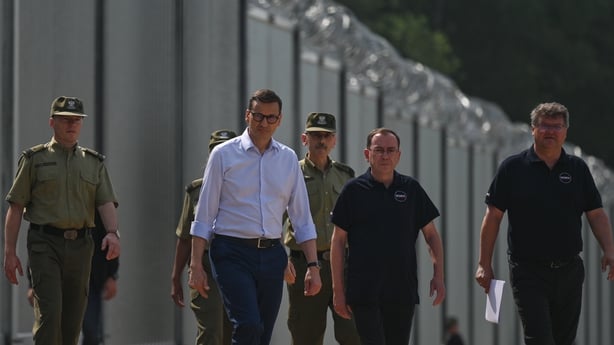
Though 1.5 million Ukrainian refugees have settled in Poland since the start of Russia’s invasion, Law and Justice has, for many years, signaled its opposition to immigration from non-EU, Muslim-majority countries.
So far this year, there have been 19,000 attempted crossings by illegal migrants, according to the Polish Border Guard. That’s up from 16,000 throughout 2022.
Safeguarding national security is also a core tenet of Law and Justice’s election campaign.
Polish Prime Minister Mateusz Morawiecki emphasised this message in late July when speaking to reporters at the border.
He said that the current security crisis on the border with Belarus was caused by Russia, whose goal was to make “Poland collapse like a house of cards”.
Mr Morawiecki also emphasised the threat posed by Wagner fighters in Belarus to Poland.
He said last week that as many as 100 Wagner fighters were operating close to Grodno, a city 10km from the Polish border.
But that number may be smaller. According to a report by the Belarusian Hajun Project, members of the Wagner mercenary group “actively conducted training” in July with members of Belarusian special forces, and artillery and mechanised units of the regular Belarusian army.
A lot of that activity, however, has taken place in central Belarus, where most of the 4,000 Wagner fighters are camped.
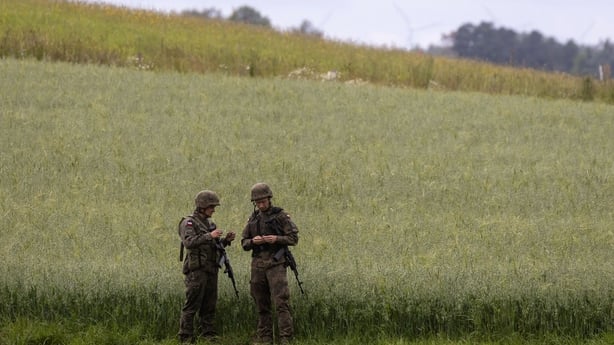
Communicating via Telegram, Anton Motolko, founder of the Belarusian Hajun Project, told RTÉ News that their sources indicate that between 20 and 30 Wagner “instructors” are operating at two training grounds, in Grodno and Brest, also on the border.
The group’s July report on military activity concludes that the Wagner Group has adopted “the task of creating tension with the countries bordering Belarus”.
“This is supported by informational and psychological operations. For example, fake news about the alleged desire of the mercenaries to seize the Suwalki gap,” the report says.
The Suwalki Gap is a strategically important 90km stretch of land that borders Poland and Lithuania. It also separates Belarus from the Russian enclave of Kaliningrad to the north.
Mr Lukashenko’s reasons for goading Poland may simply come down to the fact that, by backing Russia’s war against Ukraine, he can now only align himself more closely with Mr Putin.
The Belarusian leader has been in Mr Putin’s debt ever since the Kremlin backed his rule during the pro-democracy protests of 2020, and kept him in power.
Mr Lukashenko, and many of his regime’s senior figures, are sanctioned by the EU.
So too are a number of Belarus’ key exports, such as iron, steel, oil, and potash. And, last week, the bloc rolled out more sanctions on exports to Belarus of tech goods used in the aviation industry, including drones.
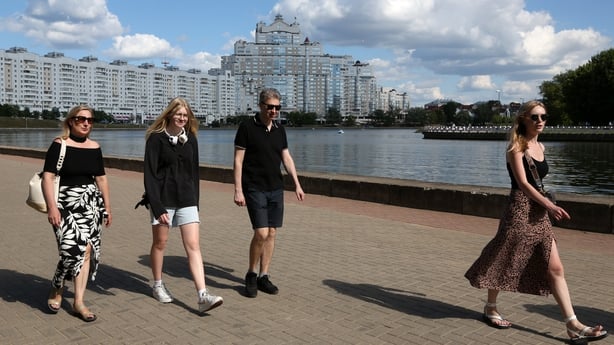
But the country still remains a transit hub for many electronic goods that are then delivered to Russia, bypassing the EU’s sanctions on Moscow.
“Lukashenko’s strategy is very simply to consume as much money as he is able to get, and I think that’s partly the story with the Prigozhin guys,” Vytis Jurkonis, project director at the Vilnius office of Freedom House, told RTÉ News.
Hosting the Wagner fighters in Belarus is both a money earner for the regime, but also a way for Mr Lukashenko to express his loyalty to Mr Putin, said Mr Jurkonis.
However, even with the presence of Wagner fighters in Belarus, there is a limit to how far Mr Lukashenko can stoke tensions with its NATO neighbours.
The capabilities of the Belarusian army remain limited and Russia has reduced his troop presence in the country in recent months.
“While Russia has a big headache on the Ukrainian front,” Mr Jurkonis said, “the cheapest thing they can do in Belarus is psy-ops to intimidate the NATO neighbours.”






